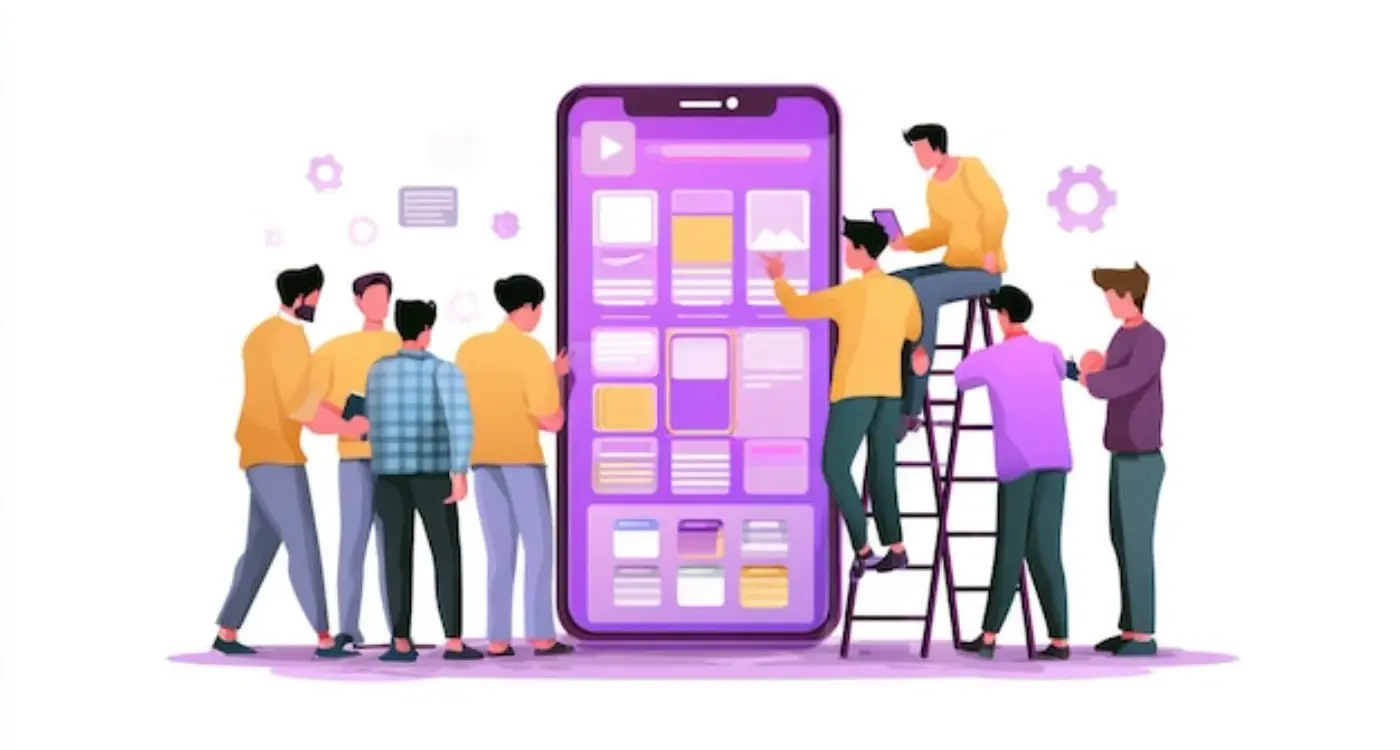What Makes App Meetings Actually Useful?
Apps that launch after well-structured project meetings have a 73% higher success rate in the first year compared to those developed through ad-hoc discussions and scattered email chains. That's not just a nice-to-have statistic—it's the difference between building something users actually want and creating expensive digital paperweights.
I've sat through hundreds of app development meetings over the years, and honestly? Most of them are terrible. People show up unprepared, stakeholders talk past each other, and decisions get made based on whoever speaks loudest rather than what's actually best for the project. It's a bit mad really, because these meetings are where the magic should happen—where ideas get refined, problems get solved, and everyone aligns on building something genuinely useful.
The thing is, effective project meetings aren't just about gathering people in a room (or on a video call these days). They're about creating structured conversations that move your app development process forward. When stakeholder engagement is done right, you catch problems early, keep budgets on track, and end up with apps that users actually download and keep using.
The best app projects I've worked on had one thing in common: everyone knew exactly what success looked like before we wrote a single line of code
But here's what most people get wrong—they think good meetings just happen naturally. They don't. Like any other part of the app development process, meetings need structure, clear objectives, and the right people involved. Get this foundation right, and suddenly those weekly check-ins become the driving force behind your project's success rather than just another calendar obligation everyone dreads.
Setting Clear Meeting Objectives
I'll be honest with you—most app development meetings are a complete waste of time. People sit around talking about everything except what actually matters, and everyone leaves more confused than when they arrived. It's a bit mad really, but I see it happen constantly with new clients who've been burnt by other agencies.
The thing is, every single meeting needs a clear purpose before anyone steps foot in that room (or joins that Zoom call). And I mean crystal clear, not some vague "let's discuss the app" nonsense. If you cant explain what you're trying to achieve in one sentence, you're not ready for that meeting yet.
What Good Objectives Look Like
Here's what I mean by proper objectives. Instead of "review the design," try "finalise the checkout flow screens and approve colour choices for the payment buttons." See the difference? The first one could take three hours and cover nothing; the second one has clear outcomes everyone can work towards.
I always send clients a simple agenda beforehand with three key points: what we're deciding, what information we need to make those decisions, and who needs to sign off on what. Sounds basic, but you'd be surprised how many agencies skip this step entirely.
Common Meeting Types and Their Real Purpose
- Discovery calls: Define the core problem your app solves and identify must-have features
- Design reviews: Get specific feedback on user flows and visual elements that need changing
- Development updates: Discuss technical challenges and adjust timelines if needed
- Testing sessions: Log bugs, prioritise fixes, and decide what's acceptable for launch
- Launch planning: Set release dates and coordinate marketing activities
The best meetings I run are the ones where everyone knows exactly why they're there and what success looks like by the end. Everything else is just expensive chat.
The Right People in the Room
Getting the wrong people in your project meetings is like trying to build an app with a broken development team—it just doesn't work. I've sat through countless meetings where half the room shouldn't have been there, and the people who actually needed to make decisions were mysteriously absent. It's frustrating, and honestly, it wastes everyone's time.
The magic number for most app development meetings? Between three and seven people. Any more than that and you'll spend half your time just trying to get everyone's attention; any fewer and you might miss important perspectives. But here's the thing—it's not about the number, its about having the right mix of people who can actually move your project forward.
Core Team Members You Actually Need
For stakeholder engagement to work properly, you need decision makers in the room. Not their assistants. Not people who need to "check with their boss later." The actual humans who can say yes or no to changes, budgets, and timelines. I mean, what's the point of discussing a new feature if nobody present can approve it?
- Project owner or product manager who knows the vision
- Technical lead who understands what's actually possible
- Designer who can speak to user experience concerns
- Client representative with decision-making authority
- Quality assurance person (for review meetings)
One mistake I see constantly? Including too many junior team members who don't contribute but feel obligated to attend. Sure, it's great for their learning, but it shouldn't come at the expense of productive discussions. Sometimes you need to be selective about who gets invited.
Before sending meeting invites, ask yourself: "Can this person either make a decision or provide information that changes our direction?" If the answer is no, don't invite them.
The app development process works best when everyone knows why they're there and what they're expected to contribute. Make that clear in your meeting invitations—it saves everyone time and keeps discussions focused on what actually matters.
You know what separates a productive app meeting from one that drags on for hours with nothing to show for it? Its the prep work. And I don't mean just having an agenda—though that helps—I mean actually thinking through what needs to happen before everyone sits down together.
Preparing for Productive Discussions
The biggest mistake I see teams make is treating meetings like brainstorming sessions where anything goes. Sure, creative discussions have their place, but when you're talking app development with tight deadlines and budgets, you need structure. Before any meeting, I make sure everyone has the same baseline information. This means sharing wireframes, user research, technical constraints, or whatever context people need to contribute meaningfully.
Getting Everyone on the Same Page
Here's something I learned the hard way: sending materials the night before doesn't work. People need at least 48 hours to digest information properly, especially if you're asking them to review designs or technical specifications. I usually send a brief overview first, then follow up with detailed materials. This gives people time to form opinions and come up with questions that actually matter.
One thing that works well is creating a shared document where team members can add their thoughts beforehand. Not a formal report—just bullet points, concerns, ideas. It sounds a bit tedious, but it transforms the actual meeting because you're not starting from zero; you're building on work people have already done in their own time.
Setting Realistic Expectations
The other key part of preparation is being honest about what the meeting can accomplish. If you're reviewing the complete user journey for a complex app, that's not happening in 30 minutes. Better to break it down into focused sessions that tackle specific areas where people can actually think things through properly.
Running Efficient Development Reviews
Right, let's talk about development reviews—the meetings that can either keep your project on track or send it completely off the rails. After years of running these sessions with clients from scrappy startups to massive corporations, I've learned that most people get them completely wrong. They either turn into endless feature wishlists or become technical deep-dives that leave half the room confused and frustrated.
The key to a good development review? Show, don't just tell. I always start these meetings by getting the actual app build running on screen within the first five minutes. Not mockups, not wireframes—the real thing, even if its rough around the edges. People need to see and interact with what we've built; it's the only way they can give meaningful feedback. Sure, there might be placeholder text or wonky animations, but that's fine—we're here to identify what needs fixing.
Focus on User Experience, Not Technical Details
Here's where most reviews go wrong: they become technical troubleshooting sessions instead of user experience discussions. When someone says "the login screen feels slow," don't immediately dive into database optimisation talk. Instead, ask them to walk through exactly what they expected to happen and where the experience fell short. Nine times out of ten, the issue isn't technical—it's about managing user expectations or improving visual feedback.
The best development reviews feel more like user testing sessions than progress reports
I always end these meetings with clear next steps and priorities. No vague "we'll look into that" promises—just specific actions, owners, and deadlines. And honestly? If the meeting runs longer than 45 minutes, you're probably trying to cover too much ground. Better to have focused, regular check-ins than marathon sessions that exhaust everyone involved.
Managing Client Expectations
Right, let's talk about the elephant in the room—clients who think their app will be built in two weeks and cost less than their monthly coffee budget. I mean, if I had a pound for every time someone's asked me to "make it like Instagram but simpler," I'd have retired by now! The thing is, managing expectations isn't about crushing dreams; its about aligning reality with possibility so everyone walks away happy.
The biggest mistake I see agencies make is nodding along to unrealistic timelines just to win the project. Trust me, that always comes back to bite you. When a client says they need their e-commerce app ready for Black Friday and it's already October, someone needs to have an honest conversation. And that someone is you.
Setting Realistic Boundaries Early
Here's what I've learned works: be brutally honest upfront about what's possible within their budget and timeframe. Sure, it might mean losing some projects initially, but you'll save yourself countless headaches later. I always use a simple framework when discussing project scope:
- What features are absolutely non-negotiable (must-haves)
- What would be nice to include if budget allows (nice-to-haves)
- What can wait for version 2 (future features)
- What technical constraints might affect the timeline
The key is explaining the why behind your estimates. Don't just say "iOS approval takes two weeks"—explain that Apple's review process is thorough and sometimes unpredictable. When clients understand the reasoning, they're much more likely to accept realistic timelines.
And honestly? Most clients appreciate straight talk more than sugar-coating. They'd rather know about potential delays in week one than week ten when they've already announced their launch date to the world.
Documentation That Actually Helps
Let's be honest—most project meetings end with someone saying "I'll send round the notes" and then... nothing. Or worse, you get a document that's basically a transcript of everything everyone said, which helps absolutely no one. After years of running app development meetings, I've learned that good documentation isn't about capturing every word; it's about creating something people will actually use.
The problem with most meeting notes? They're written for the person taking them, not for the team who needs to act on them. I mean, what's the point of documenting a two-hour discussion about user interface changes if the developer can't quickly find what they need to build? That's just wasted effort all round.
What Actually Needs Recording
Your meeting documentation should focus on three key areas: decisions made, actions assigned, and context for future reference. Skip the play-by-play of who said what—nobody cares about that later. Instead, document why certain choices were made, especially when stakeholder engagement led to unexpected direction changes in your app development process.
Use a simple template with sections for Decisions, Actions, and Blockers. This forces you to organise information in a way that's actually useful for follow-up meetings and project tracking.
Making It Stick
The best documentation gets shared within 24 hours while everything's still fresh in people's minds. I always include a brief "Next Steps" section at the top—because let's face it, that's what most people are looking for anyway. And here's something that works really well: assign someone different to take notes each time. It keeps people engaged and gives you different perspectives on what's actually important.
- Document decisions with brief reasoning behind them
- Assign clear owners to each action item with deadlines
- Note any blockers or dependencies that could affect timelines
- Include relevant screenshots or sketches when discussing UI changes
- Keep a running list of project assumptions and constraints
Handling Difficult Conversations
Right, let's talk about the conversations nobody wants to have but everybody needs to. You know the ones—when budgets explode, timelines slip, or that "simple" feature turns out to be anything but simple. I've had my fair share of these chats over the years, and honestly? They never get easier, but they do get more manageable once you know what you're doing.
The key thing is timing. Don't wait until problems become disasters. I mean, nobody enjoys telling a client that their app will cost twice what they thought, but having that conversation early beats explaining why you've blown through their entire budget with nothing to show for it. Trust me on this one—I've seen what happens when developers try to solve problems silently, hoping things will magically sort themselves out. They don't.
The Four Types of Difficult App Conversations
- Budget overruns and scope creep discussions
- Technical limitations that affect core features
- Timeline delays due to unforeseen complications
- Performance issues that require significant changes
Here's what actually works: lead with facts, not emotions. When I need to tell someone their favourite feature isn't technically possible, I don't just say "it can't be done." Instead, I explain exactly why—maybe it's an iOS limitation, or it would require permissions that users hate granting. Give people the technical reality, but translate it into business terms they can understand.
And here's something most people get wrong—difficult conversations aren't about delivering bad news, they're about solving problems together. Frame every tough discussion around "here's the situation, here are our options, and here's what I recommend." People can handle problems; what they can't handle is feeling powerless or uninformed.
The best difficult conversation is the one that ends with everyone knowing exactly what happens next. Even if the news isn't great, clarity beats uncertainty every single time.
Making Decisions That Stick
The worst thing about app development meetings? Making the same bloody decision three times because nobody actually committed to it the first time round. I've seen projects drag on for months because stakeholders keep revisiting choices that should have been locked down weeks ago.
Here's what I've learned works: every decision needs an owner, a deadline, and consequences. Not just "we'll go with the blue button" but "Sarah owns the final colour choice, she'll confirm by Friday, and if we change it after that, it adds two weeks to the timeline." People suddenly become much more decisive when they understand the real cost of flip-flopping.
A decision without ownership is just an expensive conversation that you'll have again next week
The Decision Framework That Actually Works
I use what I call the "three-step lock" in every project meeting. First, we clearly state what we're deciding and why it matters to the project. Second, we assign ownership—one person who has final say, not a committee. Third, we document the reasoning behind the decision, because six months later nobody remembers why they chose that particular approach.
The documentation bit is crucial, actually. When stakeholders want to revisit decisions later (and they will), you can show them exactly why the original choice was made. Most of the time, the reasoning still holds up and they'll stick with it.
When to Lock Down vs Stay Flexible
Not every decision needs to be set in stone immediately. Technical architecture decisions? Lock those down early—changing them later is expensive. UI colours and copy? You can stay flexible longer without major cost implications. The key is being honest about which decisions have expensive consequences and which ones don't really matter to your timeline or budget.
Conclusion
After years of sitting through countless app meetings—some brilliant, others that made me question my career choices—I've learned that the difference between productive sessions and complete time-wasters comes down to preparation and purpose. It's honestly that simple, yet so many teams still get it wrong.
The meetings that actually move projects forward have clear goals from the start. Everyone knows why they're there and what needs to be decided by the time they leave. There's proper documentation that people actually read (not just file away), and when difficult conversations need to happen, they happen with honesty and respect.
But here's the thing that really matters: good meetings create momentum. When your team walks out feeling energised rather than drained, when clients understand exactly what's happening next, when decisions stick because everyone was part of making them—that's when you know you've got it right.
I've watched projects succeed or fail based on how well teams communicate during development. The apps that launch on time and exceed expectations? They come from teams that mastered the art of productive meetings early on. They didn't waste weeks in revision cycles because someone wasn't in the room when key decisions were made.
Your app meetings don't have to be painful. They can actually become the engine that drives your project forward, keeping everyone aligned and focused on what really matters: building something users will love. Start with one change—maybe it's setting clearer objectives or improving your documentation—and build from there. Your future self will thank you for it.
Share this
Subscribe To Our Learning Centre
You May Also Like
These Related Guides

What Strategies Work Best for Managing App Development Teams?

What Are the Best Practices for Managing Remote App Development Teams?



